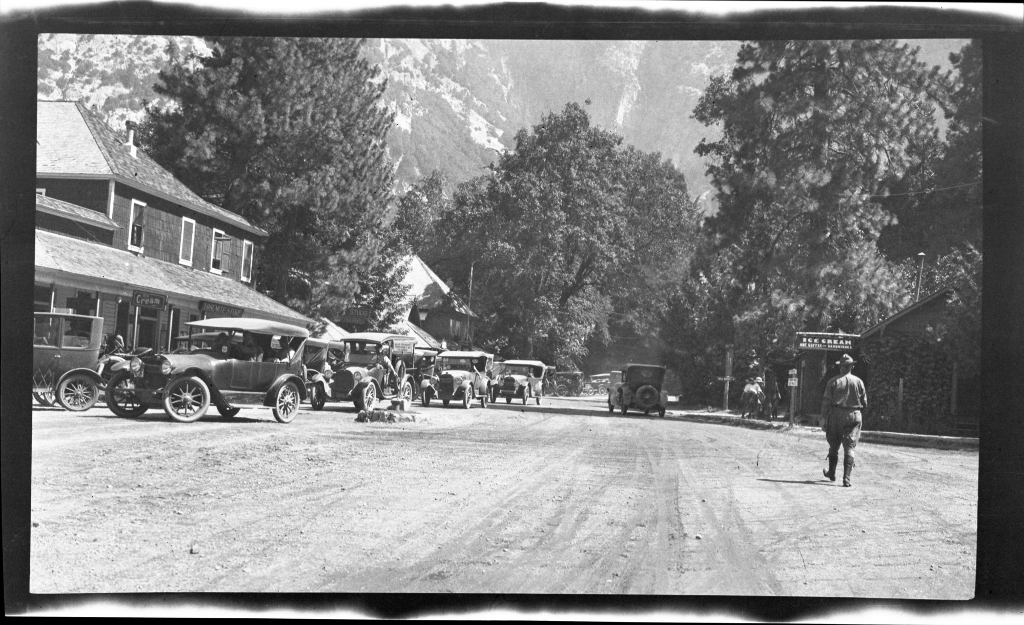
In 1855, only four years after the Ahwahneechee were forcefully removed from the Valley, the first tourist party came by horseback. Within three years, the first hotel was established, and within ten years, there were four more. Look toward Lower Yosemite Fall and notice the swath in the trees. Early hotel owners cleared this section of forest so guests could easily see Lower Yosemite Fall. Most of the meadows were fenced, plowed, grazed, and sown to grass for hay. Over 1,000 apple trees were planted and still exist in some areas of the Valley.
Prior to 1916, anyone with a little capital could set up a business in Yosemite Valley. From 1858 to the present, eighteen hotels and inns have been built in many parts of the Valley. Other conveniences such as saloons, boathouses, photographic studios, laundries, and livery stables once dotted the landscape. In the early 1900s, less than 10,000 people per year visited this Valley. Most of them complained of dust from wagon wheels and hoofed animals, smells made by the livestock, and landscapes spoiled by farming and grazing. There were telegraph and telephone wires, power poles, and poor sewer systems. At that time, an awareness was growing that special places should be spared from these types of intrusions.
The Organic Act of 1916 established the National Park Service and set its purpose "...to conserve the scenery and the natural and historic objects and the wildlife therein and to provide for the enjoyment of the same in such manner and by such means as will leave them unimpaired for the enjoyment of future generations."
Past generations had the foresight to protect this land and now our generation must improve upon and continue that legacy.
As you walk to the next stop, try to imagine what sorts of threats--both natural and human-caused--people feared could harm the Valley.
Is there something we missed for this itinerary?
Itineraries across USA


















































